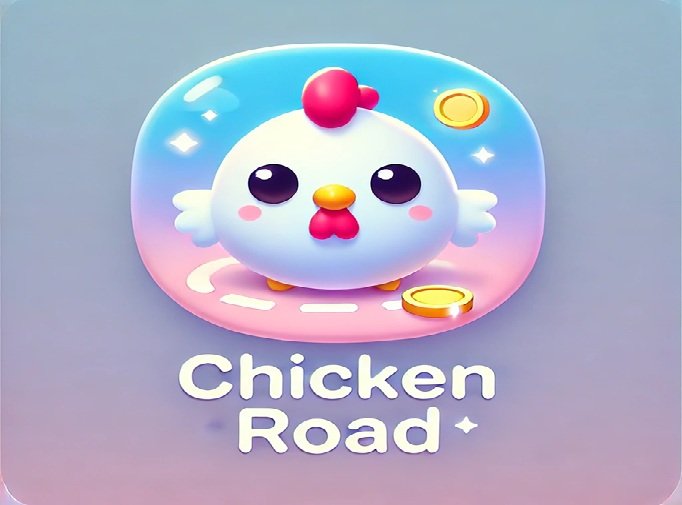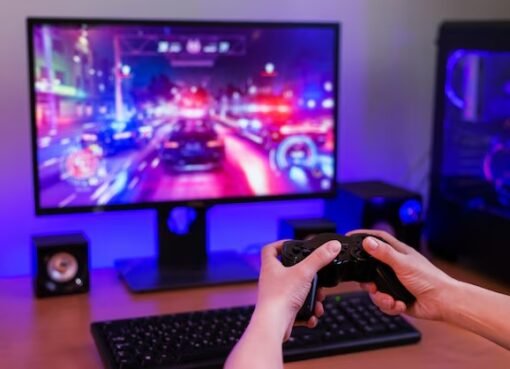Why the Chicken Road Game app feels fast before the game even starts

The moment you open the Chicken Road Game app, it becomes clear this isn’t a typical mobile experience. There are no layered menus, flashy intros, or unnecessary pop-ups asking for permissions you don’t want to grant. Instead, you’re met with simplicity — and that simplicity is powerful.
This crash game app wastes no time. You launch it, and you’re already just a tap away from gameplay. That lean design approach reflects the speed-focused nature of the game itself. Every element, from the size of the buttons to the soundless transitions, exists to remove barriers and let you act — instantly.
One of the standout qualities of the application is how lightweight it is. It doesn’t flood your device with background processes or demand high specs. It’s designed to run smoothly, load fast, and work seamlessly whether you’re on a flagship phone or something far more modest. You can access the app version directly at https://offtheshelf.in/app/ — and you’ll immediately notice how stripped down it feels, in the best possible way.
There’s also a psychological element at play. Because the app doesn’t overwhelm you visually or functionally, you stay focused. You know why you opened it — to react, not to explore. This makes the experience feel purposeful. Direct. Even addictive.
In short, this isn’t just a companion to the game — it’s the game, only faster. And in a crash title where every second matters, speed before the first tap is just as important as what comes after it.
How the first launch of the app sets the tone for the entire experience
Opening a game app often means dealing with loading screens, intro animations, and permissions you’d rather skip. But here, the first launch tells a different story. The application starts with almost no friction. You’re not greeted with noise — you’re met with focus.
This opening simplicity isn’t a coincidence. It’s a design choice that places the player directly in control. The game doesn’t need to explain itself. The interface reflects that: no pop-ups, no login forms, and no distractions. What you see is what you play — and that sends a message. You’re not here to set things up. You’re here to respond, quickly.
This fast start has a clear psychological effect. It prepares the brain for urgency. There’s no buildup, no anticipation curve — just entry and execution. Players become more engaged because they’re not watching. They’re doing.
Here’s what makes the first launch experience stand out:
- No mandatory sign-up;
- Load time is nearly instant;
- The home screen shows only essential elements;
- Background processes are minimized to boost performance;
- It gives a direct path to gameplay without clutter.
This level of minimalism teaches players something before the game even begins — clarity matters. You’re not left wondering what to do next. The answer is always: press start.
Why the interface keeps you in action, not in menus
Menus are useful — but only when they serve the game, not when they become the game. Many mobile titles overload players with options, customizations, tabs, and settings. Here, the interface is designed to do the opposite. It stays out of your way.
What stands out is how quickly you can move from app launch to active play. Everything in the design serves that singular flow. Colors are clean and neutral, buttons are large and accessible, and the layout leaves no doubt about where to tap. That confidence in design transfers directly to the player’s experience. You don’t hesitate because the interface doesn’t distract.
The app does something rare — it respects your time. It doesn’t reward exploration within its menus. It rewards action on the field. Every second spent in the interface is a second not spent playing. That’s why it works hard to shorten those moments.
Here’s what the app’s interface gets right:
- Prioritizes function over decoration;
- Keeps navigational elements easy to read and fast to use;
- Removes unnecessary screens or loading states;
- Gives quick access to the core mechanic without delay;
- Stays consistent across different devices and screen sizes.
This level of simplicity isn’t just a design win — it’s a gameplay advantage. The less time you spend navigating, the more time you spend doing what the game is built for: reacting.
Why the app’s lightweight design makes every second faster
When an application is designed with speed as its core principle, it changes how players interact with it. This app doesn’t try to impress with flashy visuals or animations. Instead, it focuses on reducing load times, keeping memory usage minimal, and delivering immediate response to touch. Everything in the experience feels tighter because it’s optimized for one thing: quick play.
Players often overlook the technical side of things, but it plays a major role in satisfaction. Delays, stutters, or unexpected freezes can break immersion — especially in a game where timing is everything. What makes this app effective is its ability to avoid those pitfalls, even on lower-end devices. It doesn’t demand much, but it delivers more than expected.
Efficiency in this context isn’t about minimal features. It’s about smart distribution of resources. The game starts fast, runs smooth, and doesn’t overload your device. And when every second counts, that performance edge matters more than ever.
How the game experience changes depending on your device

While the game’s design is built to feel universal, it still adapts subtly based on the phone or tablet you use. On newer devices, everything is hyper-responsive — taps feel instantaneous, and visuals move cleanly across the screen. But the true strength lies in how well it also runs on older or budget models.
This adaptability comes from the app’s flexible backend. It automatically adjusts graphics quality, sound behavior, and touch sensitivity to match the device’s capabilities. That means no one is locked out of performance based on hardware. Whether you’re using a flagship smartphone or a mid-tier model, the core gameplay remains intact.
This kind of cross-device consistency is rare in crash-style games, where precision and timing define the experience. It’s not just about how it looks. It’s about how it feels. And this app ensures that feel stays sharp, regardless of your screen size or processor speed.
Performance benefits you’ll notice across devices:
- Short load times even on older phones;
- Smooth animations with minimal input delay;
- Automatic scaling of resolution for clarity;
- No overheating or battery drain during short sessions;
- Identical controls and button placement on all devices.
What matters most isn’t how powerful your phone is. It’s how ready you are when the game starts. And this app ensures that nothing about your device gets in the way of that moment.
What happens when the app crashes and how to recover quickly
Technical interruptions can be frustrating, especially in high-focus games that rely on split-second decisions. If the application suddenly closes or freezes, it disrupts not just your session but your rhythm. However, the structure of this app minimizes recovery time. Crashes are rare, and when they do occur, re-entry is streamlined.
Most users find that the app reopens quickly and places them back at the start screen without any unnecessary steps. There’s no need to reload settings or reconnect accounts. The lightweight design plays a major role in this resilience. With fewer dependencies and processes, there’s less that can go wrong.
Additionally, the absence of stored progression removes a common issue found in other games — lost data. In this format, each session is self-contained. You lose the round, not your overall progress. That structure turns a potential setback into something manageable.
How interface customization is subtle but effective
Though the app appears minimal at first glance, it does include user-oriented elements that shape how you interact with it. While there are no traditional customization menus, the app responds to your habits. It remembers the last used orientation, preserves volume preferences, and maintains your last tap location preference, especially for those who play with one hand.
These minor adjustments happen quietly. You’re not asked to fine-tune controls — they fine-tune themselves based on your usage. Over time, this builds a feeling of familiarity. The game starts to “fit” your hand and your play style without you needing to do anything manually.
This subtle personalization reinforces a key idea: the app isn’t trying to be flashy. It’s trying to be fast, direct, and responsive to the player behind the screen. When the interface stays predictable, your mind stays focused. And that’s exactly what this game demands.
Why mobile gameplay feels more natural than the browser version
Mobile gaming isn’t just a smaller screen — it’s a completely different kind of experience. When you play through the app, everything becomes tactile. Your thumb becomes the controller, and your reaction becomes instinct. The gestures feel more physical, more immediate. Compared to the browser version, this difference is impossible to ignore.
On a desktop or laptop, you’re separated from the game by a mouse or keyboard. There’s a physical gap between your input and the result. But on mobile, you’re in direct contact with the action. This closeness adds intensity — especially in a crash-style game where every millisecond counts.
What also sets the mobile app apart is how seamlessly it integrates into your daily flow. You don’t need to open a browser, type anything, or wait for a page to load. A single tap brings the game to life. That immediacy translates into more frequent sessions, sharper reflexes, and deeper immersion.
In short, playing on your phone isn’t just convenient — it’s a performance advantage. And once you’ve felt that difference, going back to the browser feels like adding unnecessary steps.
How the mobile experience shapes the future of reaction-based gaming
The mobile version of Chicken Road Game isn’t just an alternative to the desktop format — it’s a complete rethinking of how crash mechanics are best delivered. Through optimized speed, direct input, and adaptive design, the app brings every element closer to the player. It’s not just about playing more conveniently; it’s about reacting with sharper precision and greater consistency.
From the very first tap, the mobile version reduces barriers. There’s no loading screen fatigue or hardware hesitation. It’s made for movement, for immediacy, for moments when instinct beats calculation. The physical connection to the game through touch translates directly into a more immersive and dynamic experience.
The benefits stack up: faster access, smoother performance, lower device strain, and a truly portable format that encourages frequent and focused play. Add to that a clean, lightweight interface, and you’ve got a game that respects both your time and your skill.
This isn’t just a version of the game — it’s the version that makes every second feel intentional. Whether you’re chasing the perfect timing or trying to recover from a near miss, the mobile format puts every reaction in your hands — literally. For a genre that’s defined by urgency, this approach isn’t optional. It’s essential.



